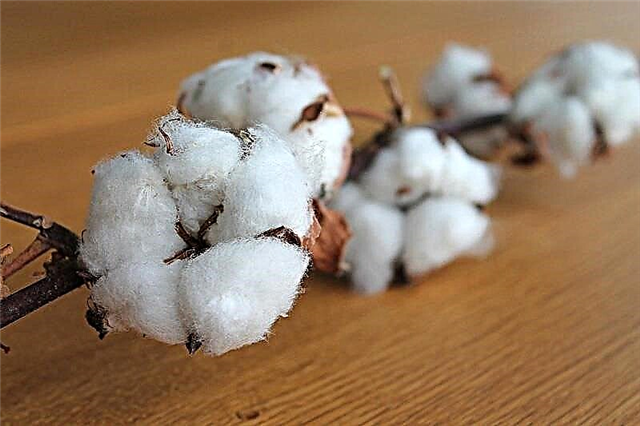Share
Pin
Tweet
Send
Share
Send
Easy to use and care cotton is very popular all over the world. The fabric is soft, durable, absorbs moisture well and is suitable for almost any season.

Cotton is one of the oldest types of fabric.
According to archaeological excavations, cotton is at least 7,000 years old! At different time periods, it began to be cultivated in India, Mexico, Pakistan, Ancient Egypt, China, Peru and other countries. Cotton came to Europe much later, it was brought by Arab merchants somewhere at the beginning of the XI century. ADThe industrial revolution led to the incredible development of the cotton industry. The first spinning machines for the production of cotton linen were patented in England closer to the middle of the 18th century. Gradually, the technique improved and at present we have a huge selection of cotton fabrics of very different processing and mixed with many different fibers of different properties - dense and loose, thin and light, shape-holding and well-draped fabrics with linen or twill weaving.
Many people like cotton fabrics for their naturalness, ease in tailoring and comfort in wearing.
Everything is sewn from cotton: from bedding, curtains and furniture fabrics to carpets, wall coverings, book bindings, bags, shoes and, of course, clothes, especially summer clothes.
- Best-seller
- Special offer

- 1
- 2
- 3
- 4
- Special offer

- 1
- 2
- 3
- 4
- Special offer

- 1
- 2
- 3
- 4
In addition, cotton is the most popular type of fabric used in patchwork.
In addition to direct use, other products are made from cotton seeds. Crushed seeds, for example, are added to flour. You can dress salads with cottonseed oil. And cotton is used to make feed for fish, poultry and livestock, and leaves and stems are mixed with the top layer of the earth when it is digged to enrich the soil.
Before cutting
Before proceeding with the cutting, the cotton fabric must be rolled and then ironed carefully. Cotton decoding will make it possible to understand how a particular piece of fabric will behave in the future - whether it will shrink, lose color, change its tactile properties, or lose shape.How to decorate fabric, read on BurdaStyle.ru
Not all types of cotton are subject to shrinkage, but it is still better if the footage of the cut is slightly larger than that required for a particular model. On average, add 10 extra centimeters to the required length. Better to leave a little fabric than not enough.
How to sew from cotton

Plain cotton is easy to cut and sew. The canvas, as a rule, is obedient and the displacement of parts relative to each other is practically excluded. The main thing is to choose the right needle and thread for sewing, they must be perfectly sharp and match the thickness and density of the cotton fabric. For example, jeans for jeans are suitable for gabardine, and silk needles for thin cambric.
- Special offer

- 1
- 2
- 3
- 4
- Best-seller
- Special offer

- 1
- 2
- 3
- 4
- Special offer

- 1
- 2
- 3
- 4
And remember that it is best to knit parts from cotton fabrics using thin needles and threads so that traces of stitches are almost invisible if, for example, you have to open the seam.
What kind of gabardine fabric?
Fabric properties
The quality of cotton depends on the length of the fibers that are extracted from the cotton seed boxes: the longer they are, the better and more expensive the cotton fabric.Cotton is a very durable fabric, tear-resistant and resistant to relatively high temperatures.
A distinctive feature of cotton is its high hygroscopicity. It can absorb up to 20% moisture from its own weight and does not seem wet. Therefore, the cotton dries slowly.
Thanks to mercerization, the cotton is given a light shine, increased resistance to tearing and almost completely deprives its ability to shrink.
Cotton fabrics do not warm well. However, due to napping, the ability to retain heat is increased.
The cotton is wrinkled badly.
Poor quality cloth after washing can skew much.
- Special offer

- 1
- 2
- 3
- 4
- Special offer

- 1
- 2
- 3
- 4
- Special offer

- 1
- 2
- 3
- 4
Cotton Care
They can be washed in a machine using modern washing powders that do not corrode paint, are well rinsed, cope with pollution even at low temperatures.White and colored plain cotton products are allowed to be washed at a temperature of 90 °, printed cotton products are washed at 60 °, and from fine types - at 40 ° in a delicate or manual mode.
For detergents made of white cotton, you can use any detergents; for products made of colored cotton, delicate detergents and detergents without bleaches are best suited.
This is interesting: ironing properly means good sewing!
Dried cotton items in a straightened form to avoid excessive creasing of the fabric. It is advisable not to let things dry until the end, it is easiest to iron the cotton in a wet state. The temperature regime, as a rule, in the "cotton" position is one of the highest indicated on the iron. But thin cotton is best ironed in the "wool" mode to avoid excessive drying of the fabric and possible damage. And do not forget to use the steam function, which will facilitate and speed up the ironing process.
Since cotton fabrics are wrinkled strongly, it is better to store them twisted into small rolls or on thick, soft hangers as for knitwear.
- Special offer
- 1
- 2
- 3
- 4
- Special offer

- 1
- 2
- 3
- 4
- Special offer

- 1
- 2
- 3
- 4
Photo: pixabay
Material prepared by Julia Dekanova
Share
Pin
Tweet
Send
Share
Send



